
Tonight's main event is the total lunar eclipse. Starting at about 10:00 PM, the Moon will move through the darkest part of the Earth's shadow.

The Moon will first encounter the penumbra, the outer portion of the shadow, which blocks only a portion of the solar disk. You may detect a slight dimming of the lunar surface as the Moon moves deeper into the penumbra. At around 10:00 PM, the Moon will start to enter the umbra, the central portion of the shadow. In this region, the Earth blocks the Moon's view of the Sun completely. However, a little sunlight manages to reach the Moon by travelling through the Earth's atmosphere, which bends it around the edge of the Earth. This refracted light is a deep red, for exactly the same reason that a sunset is deep red: red light penetrates the dusty, dirty, cloudy air of the Earth better than blue light. You should notice the Moon's drastic change in brightness and color as it creeps into the umbra. The show will reverse around midnight, as the Moon leaves the umbra and grows brighter. By 1:00 AM, it may be hard to notice anything out of the ordinary.
As the Moon moves through the Earth's shadow, it will become much dimmer than usual. Try using the text below to measure its brightness. Walk to an area far from any artificial light and hold the paper so that only moonlight falls upon it. How small is the smallest text you can still read?
Rutabega washing rice snow buckle.
Dry hat foosball calendar telephone piglet strand.
Elf win book game freeze bin test in the cough music throw fourth quarter.
Necromancer stinking boffo insipid crutch steal man drink eat insolent dripping bulb quandrary.
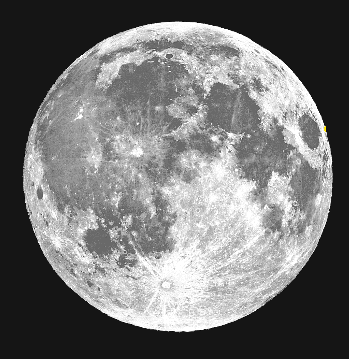 |
 |
| 9:30 PM | 10:00 PM |
 |
 |
| 10:30 PM | 11:00 PM |
 |
 |
| 11:30 PM | midnight |
The Moon orbits the Earth once each month. Every 29.53 days, we see a Full Moon as the Moon reaches the point on its orbit opposite the Sun. In this view of the Moon's orbit from above, it looks like the Earth should block any sunlight from reaching the Moon. So why isn't there an eclipse every month?
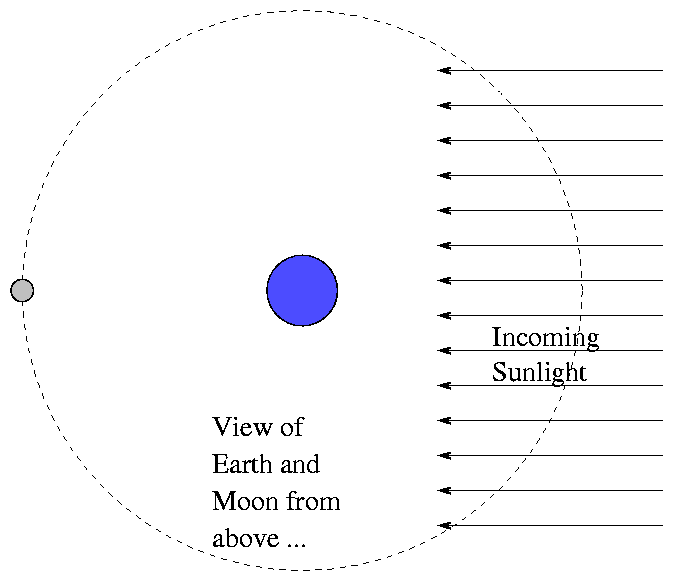
The answer is simple: the Moon's orbit is tilted by about 5 degrees with respect to the line connecting the Sun and the Earth. A view from the side reveals what happens during 90% or so all Full Moons:
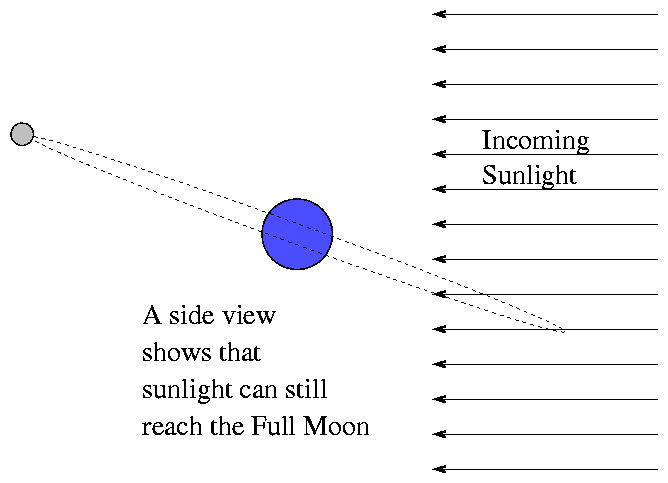
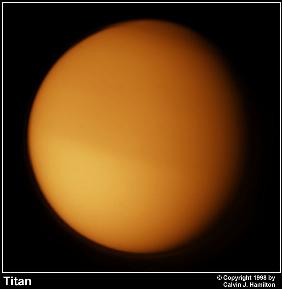 You may have heard something about a spacecraft flying past
Titan recently. Titan is the largest moon of Saturn,
and one of the largest moons in the entire solar system.
It's the only moon with a significant atmosphere.
In fact, Titan's hazy clouds are so dense that they
block our view of the surface; pictures taken by
the Voyager spacecraft show a featureless orange sphere
You may have heard something about a spacecraft flying past
Titan recently. Titan is the largest moon of Saturn,
and one of the largest moons in the entire solar system.
It's the only moon with a significant atmosphere.
In fact, Titan's hazy clouds are so dense that they
block our view of the surface; pictures taken by
the Voyager spacecraft show a featureless orange sphere
The Cassini spacecraft is currently in a braking orbit around Saturn. It passed very close to Titan on Oct 26, coming within about 200,000 miles -- that's roughly the distance between us and the Moon. It used a special camera to take pictures in infrared light, which can pass through the hazy atmosphere, revealing features on the surface below. Below is one set of these images, hot off the press; you can find more at
http://saturn.jpl.nasa.gov/news/events/titana/index.cfm
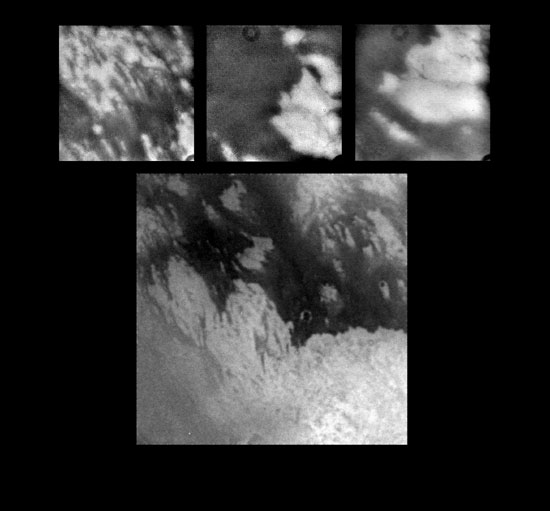 On January 14, 2005, the Cassini spacecraft will drop
a probe called Huygens into the atmosphere of Titan.
It will float down gently via parachute, sending back
pictures and data on the atmosphere and surface.
You can read more about Cassini and Huygens
at the Cassini mission website,
On January 14, 2005, the Cassini spacecraft will drop
a probe called Huygens into the atmosphere of Titan.
It will float down gently via parachute, sending back
pictures and data on the atmosphere and surface.
You can read more about Cassini and Huygens
at the Cassini mission website,